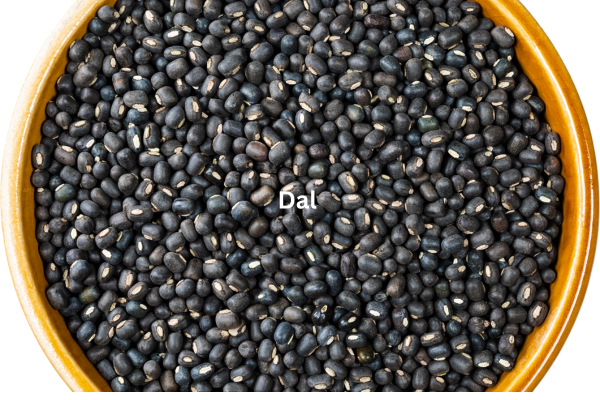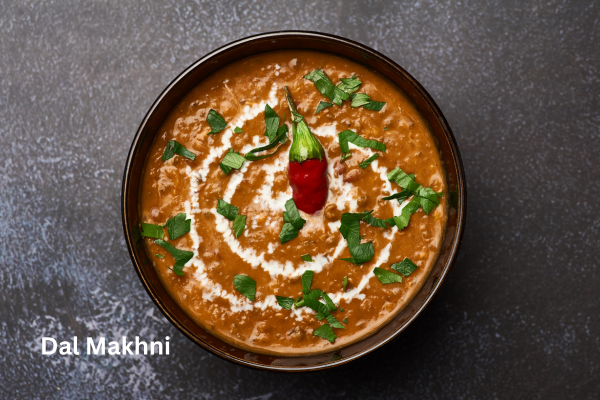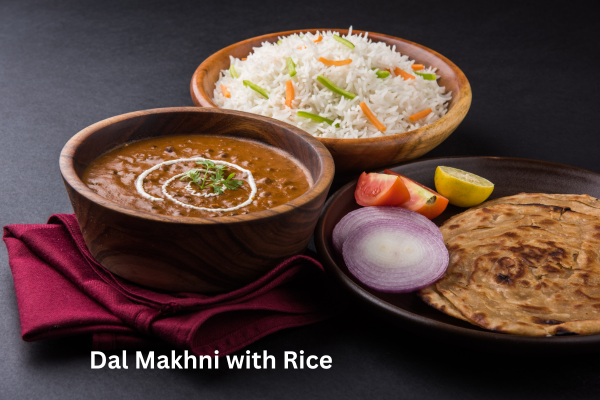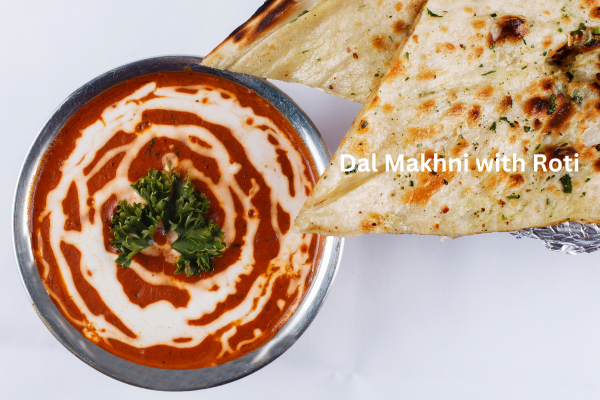A SHORT AUDIO OF THE POST
Introduction to Mastering Dal Makhni: 5 Chef-Approved Secrets Revealed
Ready for the rich, velvety goodness of Dal Makhni without the restaurant experience? 🍲 It seems plenty of kitchen cooks have an issue in maintaining that ideal mix of tastes and textures on this favoured Punjabi recipe.
But what if we told you that everything you need to make the perfect bowl of Dal Makhni is right in front of you? You can then wow your family and friends with an authentic Dal Makhni that can deceive them into thinking it was created not in your family kitchen, but in one of a five-star hotel itself. We have also consulted with the top chefs to find the five important secrets for elevating this simple lentil dish to a gourmet status.
Whether it is choosing the best dal blend or the art of tempering, we are going to spill the culinary wisdom that will completely redefine your Dal Makhni. Slow cooker mastery is about to be dished out; the balance of cream and butter will be made clear, and the final touches will be explained. Now it is time to unearth these Dal Makhni maestro secrets with the help of the experts! 👨🍳👩🍳
The Perfect Dal Selection

A. Choosing the right lentils
In order to make a perfect Dal Makhni, choice of lentils is the base. The legendary mix of whole black lentils (urad dal), and red kidney beans (rajma) are traditionally used for cooking this iconic dish. The key to the correct taste and texture depends on the ratio of these two ingredients.
Lentil Type | Proportion | Characteristics |
|---|---|---|
Whole Black Lentils (Urad Dal) | 3/4 | Creamy texture, rich flavor |
Red Kidney Beans (Rajma) | 1/4 | Adds body and visual appeal |
In shopping for lentils, look for:
Unpolished whole black lentils with skin intact
Kidney beans, evenly sized, they are deep red.
Fresh stock without any visible damage or discoloration
B. Optimal soaking techniques
Soaking Dal properly is necessary to get the right texture in your Dal Makhni. Follow these chef-approved techniques:
Rinse the lentils and beans thoroughly under cold water
Place them in separate bowls with room temperature water and soak them at least for 8 hours or overnight.
To soak use a 1:3 lentil to water ratio
Also, add a pinch of baking soda to the soaking water to soften the lentils faster
Pro tip: For a really quick method, use hot water for the soak, and decrease the soak time to 4 to 6 hours.
C. Balancing flavors with mixed dals
The classic Dal Makhni recipe consists of using whole black lentils and kidney beans; however, some chefs prefer to add other lentils to upgrade the flavor and the nutrition intake. This is how you can experiment with the mixed dals :
A nutty flavor is added through the addition of a small portion of chana dal (split chickpeas)
For smoother consistency, include masoor dal (red lentils).
Experiment with a touch of moong dal (which happens to be quite green with a milky color) for some extra protein
Additional Dal | Proportion | Flavor Contribution |
|---|---|---|
Chana Dal | 1/8 | Nutty, earthy notes |
Masoor Dal | 1/8 | Smoothness, mild taste |
Moong Dal | 1/16 | Subtle sweetness, protein boost |
The trick is to pair these additional ingredient for a more complex flavor profile with a continued dominance of whole black lentils.
Having gone through the ideal dal selection, we will proceed to the key dimension of slow cooking expertise, which is most vital for the creation of the thick and creamy texture by which Dal Makhni is acknowledged.

Slow-Cooking Mastery

Our choice of dal now allows us to move forward into the fundamental preparation steps of creating top-quality Dal Makhni. A crucial period of cooking develops both rich along with complex flavors which characterize this beloved dish.
Ideal cooking duration
The secret to a truly remarkable Dal Makhni lies in its extended cooking time. Professional chefs recommend:
Minimum cooking time: 6-8 hours
Optimal cooking time: 12-24 hours
This prolonged simmering allows the lentils to break down completely, resulting in a velvety smooth texture and deep, developed flavors.
Cooking Duration | Texture | Flavor Development |
|---|---|---|
4-6 hours | Good | Moderate |
8-12 hours | Better | Strong |
12-24 hours | Best | Intense |
Temperature control secrets
It’s important that you maintain the right temperature for the whole slow-cooking process:
Gently boil the dal, starting on medium-high heat.
Turn down the heat and cook for the rest of the cooking time
Maintain the temperature stable at approx 85- 90 °C (185- 194°F)
This requires a heavy-bottomed pot that will distribute heat evenly.
Stirring techniques for a creamy texture
Now, agitating is essential to achieve that coveted creamy texture:
Stir every 30 to 45 minutes during the first four or six hours.
As the dal thickens, stir more and more often (every 15–20 minutes)
Prevent sticking using a wooden spoon or flat-bottomed spatula. Stirring and gently mashing some of the lentils against the side of the pot to increase creaminess
Using a pressure cooker vs. traditional methods
Using a pressure cooker can be a great time saver, while using traditional slow cooking on the stove is the best way.
Pressure cooker method:
Cook dal for 30-40 minutes under pressure
Release pressure naturally
Keep simmering on low heat for 1–2 hours
Traditional stovetop method:
Simmer dal on low heat for 6-24 hours
It requires more attention and will need to be stirred more frequently.
A good Dal Makhni can be produced using pressure cooker method but you never get the authentic texture or flavour of that in pressure cooker as you get in the traditional method.
After that we will learn the art of tempering, an extremely important step that will add the fragrant spices to our simmering Dal Makhni and elevate the flavor of our Dal Makhni to great extent.
The Art of Tempering

Essential spices for authentic flavor
Spices must cook in hot oil during tadka to produce Dal Makhni’s true Indian flavors. By heating oil or ghee along with spices the dish obtains better taste through essential oil release. The following necessary spices for Dal Makhni are Cumin seeds, Black mustard seeds, Dried red chilies, Asafoetida (Hing), Kashmiri red chili powder, and Garam masala.
Cumin seeds
Black mustard seeds
Dried red chilies
Asafoetida (hing)
Kashmiri red chili powder
Garam masala
The different spices give the dish their distinct taste profile. Look at this list of their specific duties.
Spice | Flavor Profile | Contribution to Dal Makhni |
|---|---|---|
Cumin seeds | Earthy, warm | Adds depth and warmth |
Black mustard seeds | Nutty, slightly pungent | Provides a subtle crunch and sharpness |
Dried red chilies | Spicy, smoky | Imparts heat and color |
Asafoetida | Pungent, garlic-like | Enhances overall flavor, aids digestion |
Kashmiri red chili powder | Mild heat, vibrant color | Gives the dal its characteristic red hue |
Garam masala | Complex, aromatic | Rounds out the flavor profile |
Timing the tempering process
Tempering the ingredients at the right moment helps create outstanding Dal Makhni. Here are the key steps:
Put small amount of oil or ghee into a pan to heat it to a high temperature before smoking.
Stir cumin and mustard seeds until they flash fry.
Stir mashed red chilies and hing in the pan for 10 seconds.
Pour the sauté of spices and red chilies directly onto the pan-cooked dal.
Mix in garam masala during the final moment before serving.
Distributing spiced oil swiftly over the dal should take under 1 minute.
When dal cooks too long its spices will burn and make the dish taste bitter.
Incorporating aromatic ingredients
To enhance Dal Makhni use these scented tempering ingredients:
After popping the cumin seeds put minced garlic into the oil to enhance the savory profile.
Drop grated ginger with garlic at the same time for their spicy herbal taste.
Brown onions blend together better when cooked in small slices until they turn golden.
The aromatic ingredients improve both the taste and sensory elements of the dish. A correctly tempered dish produces an attractive oil sizzle and inviting fragrance when key ingredients are added to hot oil. The way to control tempering works best through regular training and exact techniques.
Listen to the cooking process closely because this helps you know by feel when to add each ingredient. Using professional techniques from chefs will help you create Dal Makhni with satisfying flavors that match top restaurant quality. Transitioning to cream and butter balance lets us further perfect our Dal Makhni recipe.
Cream and Butter Balance

Achieving richness without heaviness
A perfect Dal Makhni requires that creaminess harmonizes perfectly with lightness. Chefs fully comprehend how to add richness to dishes without increasing their weight or heaviness. Expert strategies to establish this well-chosen harmony include adopting the following steps:
Small portions of butter along with cream are added gradually so you can enjoy the true taste at each mix step
The use of milk helps achieve lightness in your dish while you reduce the amount of cream with whole milk.
A butter ghee combination provides flavorful results without creating naive richness in the dishes
Cashew paste: Incorporate cashew paste for creaminess with less dairy
Ingredient | Purpose | Ratio (per cup of lentils) |
|---|---|---|
Cream | Richness | 2-3 tablespoons |
Butter | Flavor | 1-2 tablespoons |
Milk | Texture | 1/4 cup |
Cashew paste | Creaminess | 1-2 tablespoons |
Alternative dairy options for dietary restrictions
Multiple restrictive-diet solution options exist to mimic the traditional creamy texture found in Dal Makhni.
Coconut cream: Provides richness with a subtle tropical flavor
Cashew cream: Offers a neutral, creamy base
Almond milk: Adds a nutty undertone and silky texture
Soy cream: Mimics dairy cream’s consistency without the lactose
Try different alternatives among coconut cream and the other substitutes until you discover the best combination that satisfies your eating requirements and taste preferences. Plant-based products will modify the original taste so you should adjust the seasoning accordingly.
Emulsification techniques for smooth consistency
The achievement of velvety smoothness in Dal Makhni creation makes up the key factor for reaching an authentic restaurant-style finish. Through different emulsification methods the skilled chef combines fats and liquids into a unified mixture
You should whisk the dal intensely then add cream or butter while doing so
A smooth emulsion emerges when you introduce hot oil or ghee, which also contains spices.
An immersion blender should be used for a brief period to combine the ingredients. The dal needs simmering on low heat under regular stirring conditions. Emulsion techniques enable ingredient combination to produce smooth suspension of fats and liquids which results in the signature silky texture of exceptional Dal Makhni.
🤔 Frequently Asked Questions (FAQs)
1. Would it be possible to prepare Dal Makhani without cream?
Full-fat milk or cashew paste makes viable cream replacements in this Dal Makhani recipe, but produces slight texture modifications.
2. How long can I store Dal Makhani?
Dal Makhani remains safe to store in the refrigerator for three consecutive days. Warm the dish on a stove before adding some water to thin it down if necessary.
3. Can I freeze Dal Makhani?
Dal Makhani keeps well in the freezer for two months. To recover its rich consistency, all you need is butter and cream after thawing the dish.
4. Is Dal Makhani vegan? Although the original version contains non-vegetarian elements, vegetarians can prepare it vegan by substituting plant-based butter with coconut cream or cashew cream.
5. Detrimental sides for pairing with Dal Makhani exist; which ones are those?
Dal Makhani pairs perfectly with butter naan.
Butter naan
Garlic naan,
Jeera rice
Laccha paratha
Tandoori roti
🍛 Final Words: Your Dal Makhani Masterpiece Awaits
Dal Makhani is an expression of flavor union, lengthy preparation, and advanced culinary dedication. By applying these five tips, you will learn to prepare an Indian traditional masterpiece that has endured through generations.
Any gathering can become remarkable because of a perfectly prepared Dal Makhani. The time to start cooking begins with putting on your apron while buying urad dal as your first step of the magic process.
